GPCR/G protein

All GPCRs share a common seven trans-membrane structure. GPCRs are associated with heterotrimeric G-proteins which are GTP-binding proteins made of alpha, beta, and gamma subunits. When a ligand binds to GPCR, it activates the attached G-protein, the GDP is replaced with GTP. The activated G-protein then dissociates into an alpha and a beta-gamma complex which activates downstream signaling pathways. These intracellular signaling pathways include cAMP/PKA, calcium/NFAT, phospholipase C, protein tyrosine kinases, MAP kinases, PI-3-kinase, nitric oxide/cGMP, Rho, and JAK/STAT.
GPCRs are one of the most important therapeutic targets for various diseases, over 30% of all modern medicinal drugs target this family. Aberrant GPCR functions are involved in pathological conditions such as neurological, immunological and hormonal disorders. A large number of GPCRs have been identified, but whose ligands are not known, are classified as orphan receptors.
-
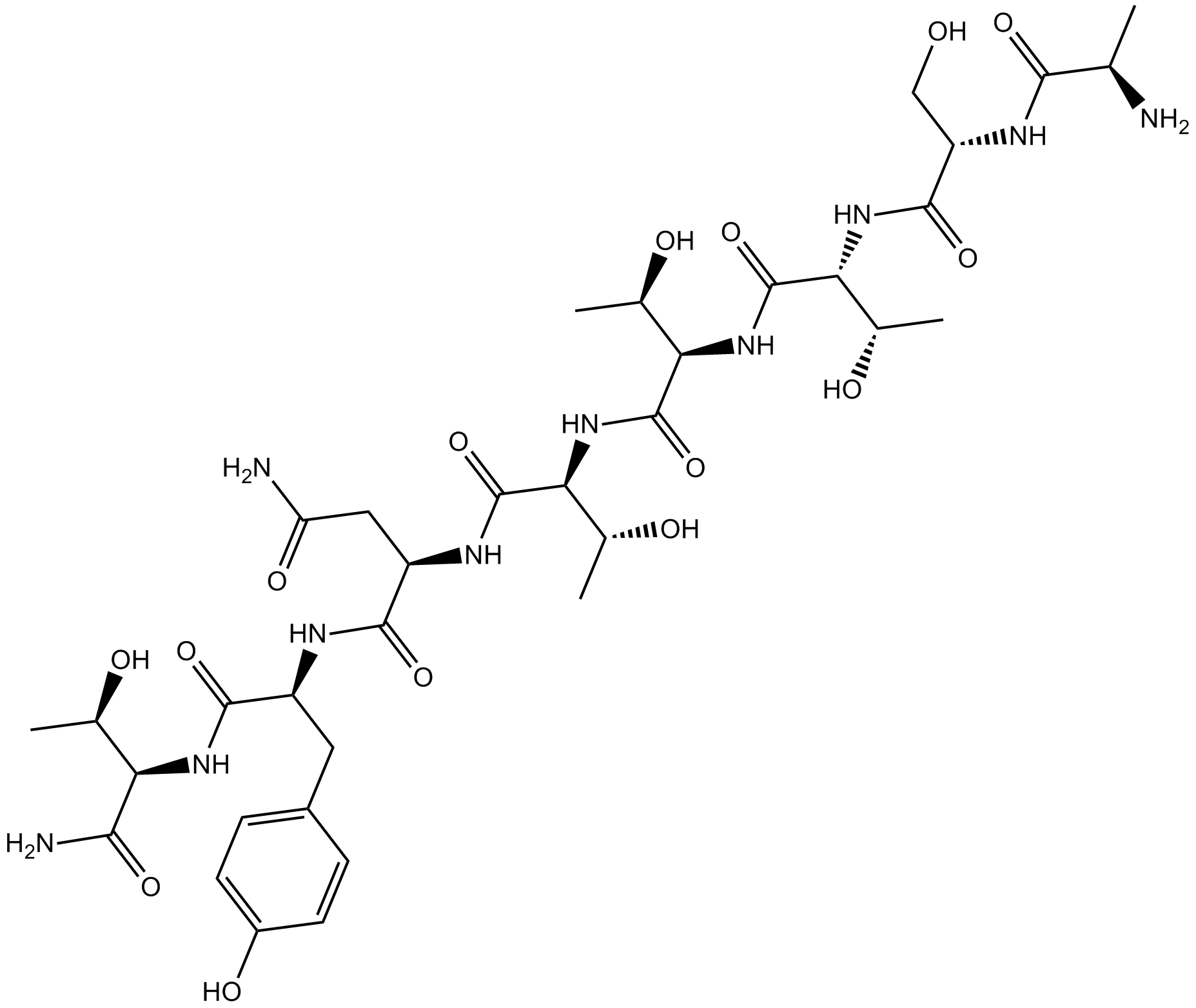 B5302 DAPTASummary: Chemokine receptor 5 (CCR5) antagonist
B5302 DAPTASummary: Chemokine receptor 5 (CCR5) antagonist -
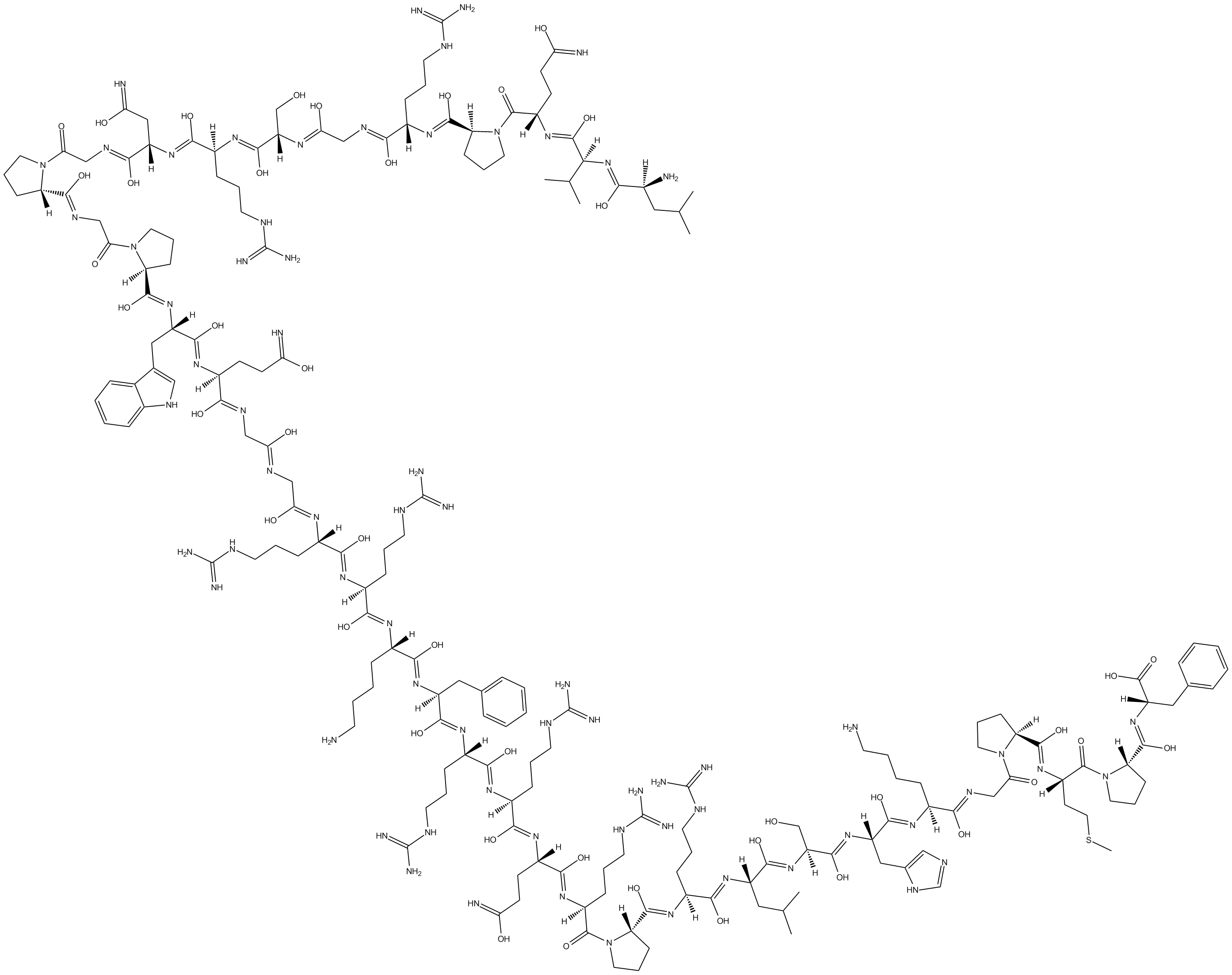 B5303 Apelin-36 (human)Summary: Endogenous APJ receptor agonist
B5303 Apelin-36 (human)Summary: Endogenous APJ receptor agonist -
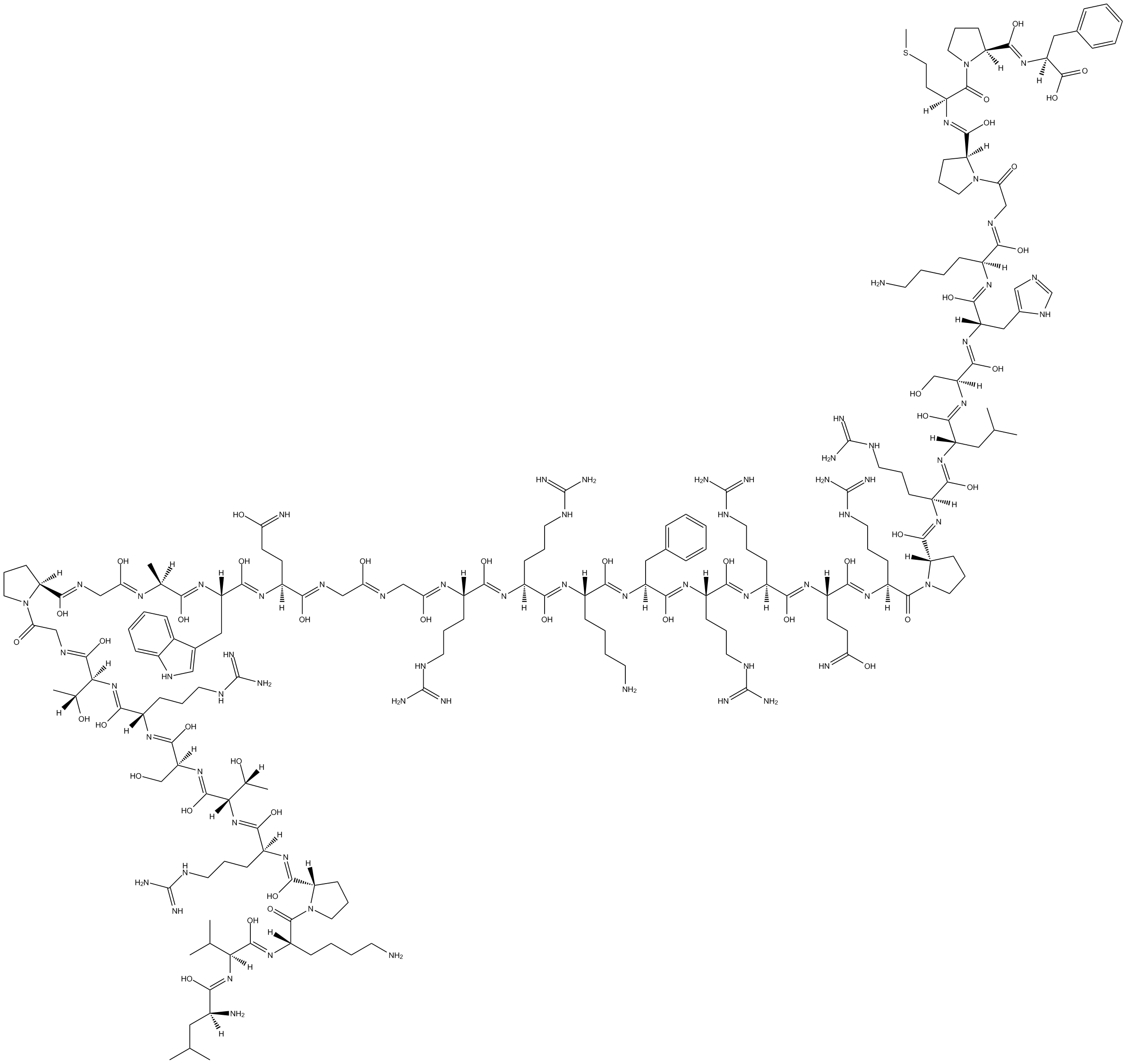 B5304 Apelin-36 (rat, mouse)Summary: Endogenous APJ receptor agonist
B5304 Apelin-36 (rat, mouse)Summary: Endogenous APJ receptor agonist -
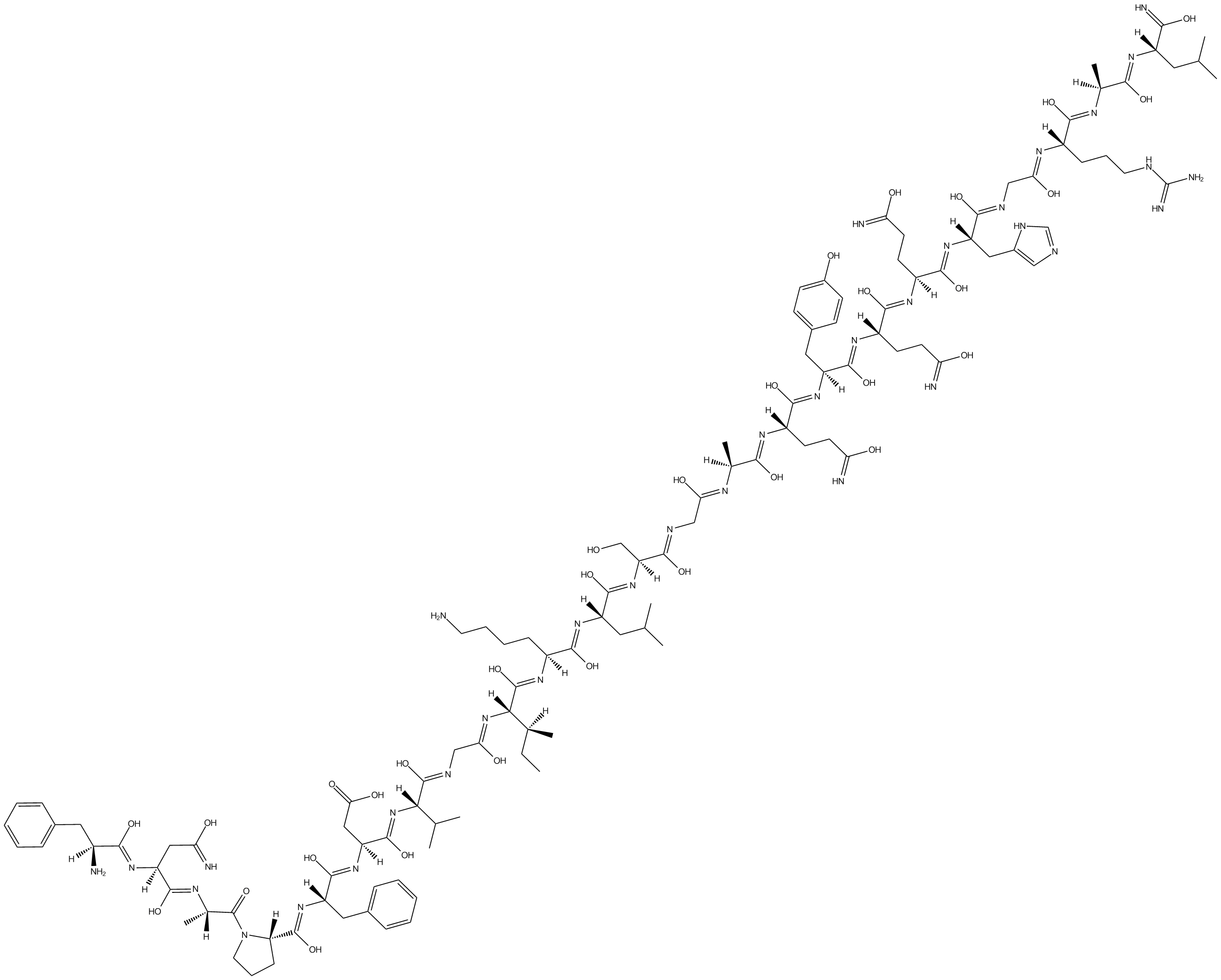 B5306 Obestatin (rat)Summary: Endogenous peptide that suppresses food intake and body weight-gain
B5306 Obestatin (rat)Summary: Endogenous peptide that suppresses food intake and body weight-gain -
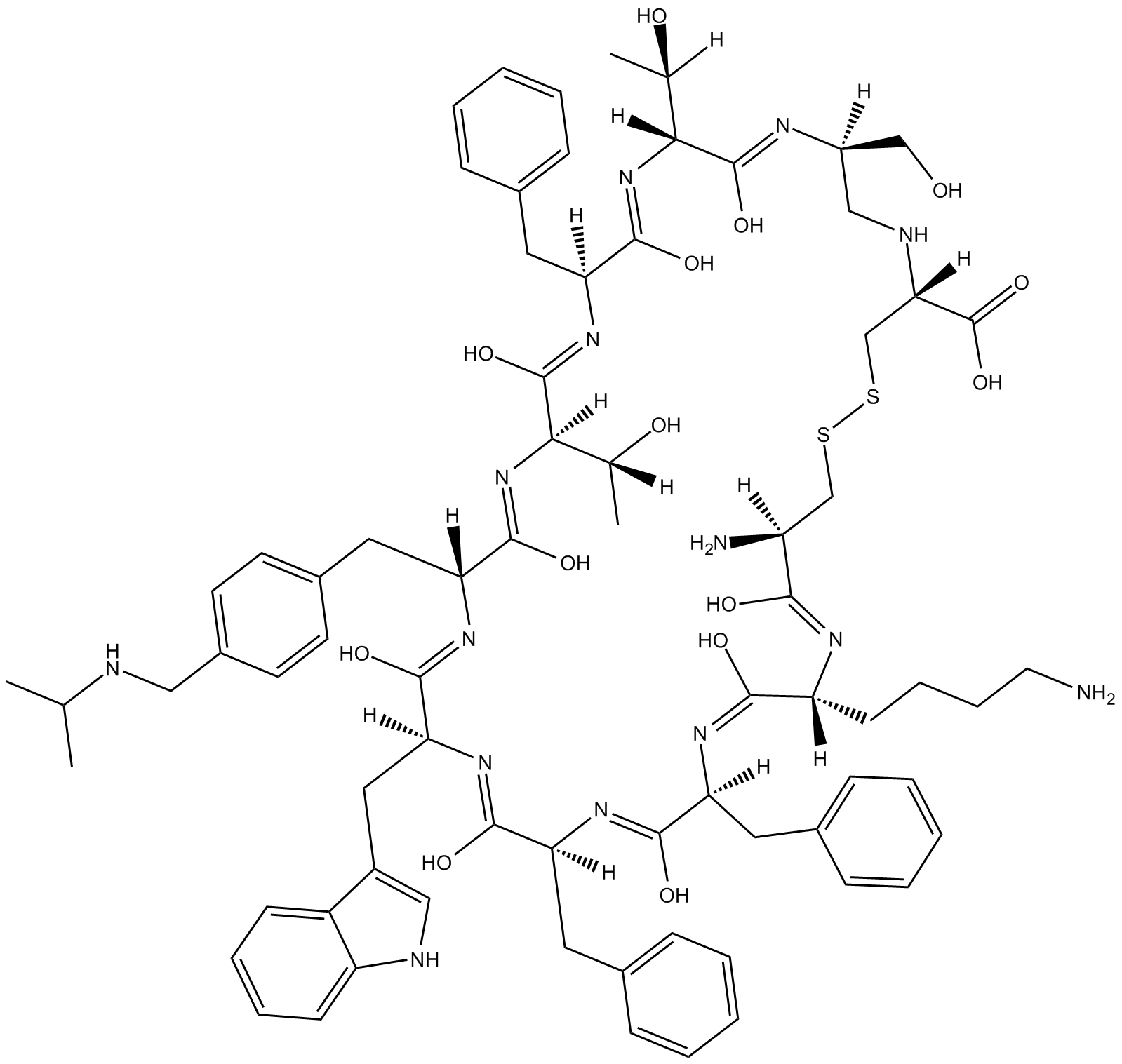 B5307 CH 275Summary: Potent somatostatin receptor 1 (sst1) agonist
B5307 CH 275Summary: Potent somatostatin receptor 1 (sst1) agonist -
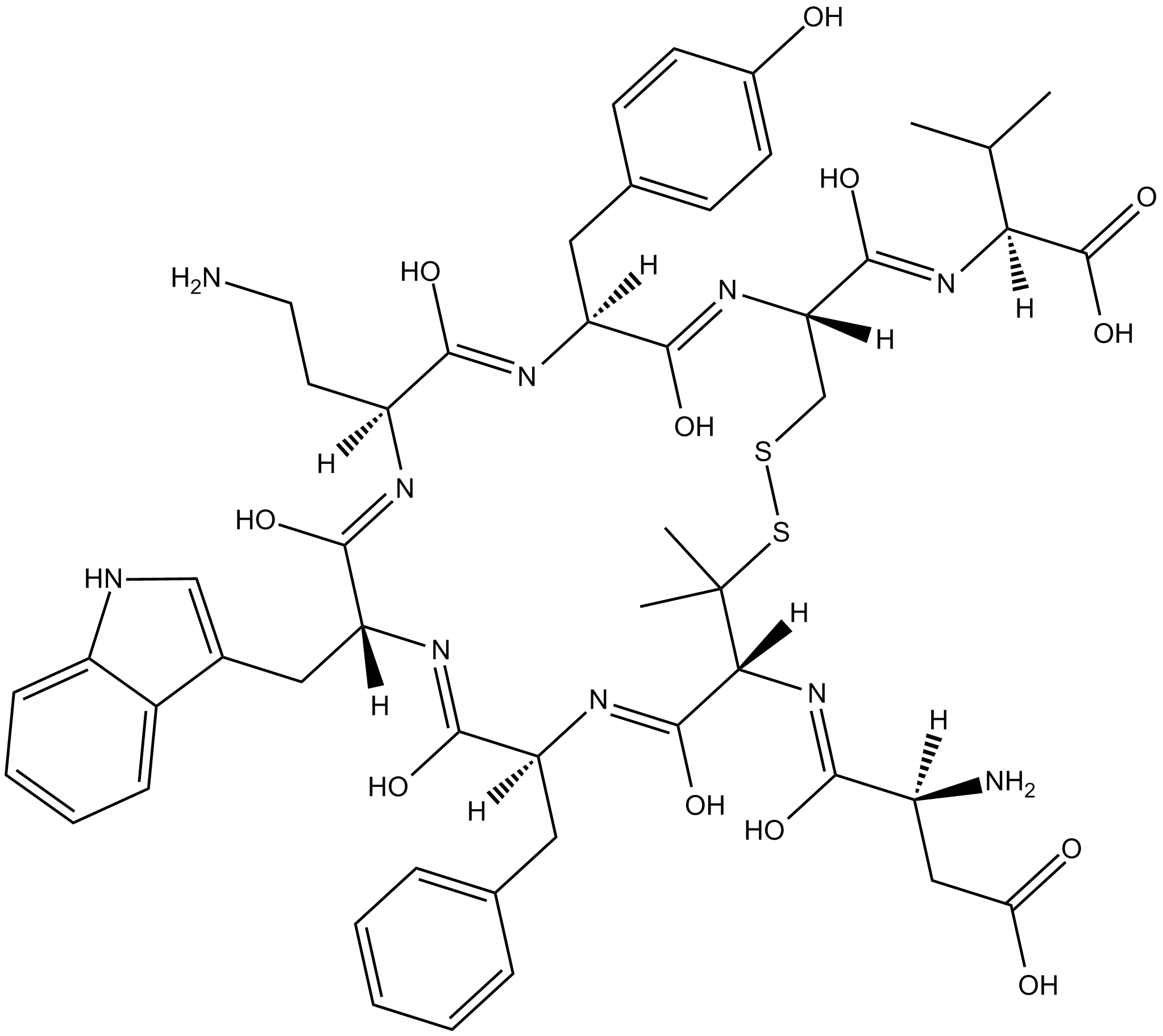 B5311 UFP 803Summary: Urotensin-II (UT) receptor ligand
B5311 UFP 803Summary: Urotensin-II (UT) receptor ligand -
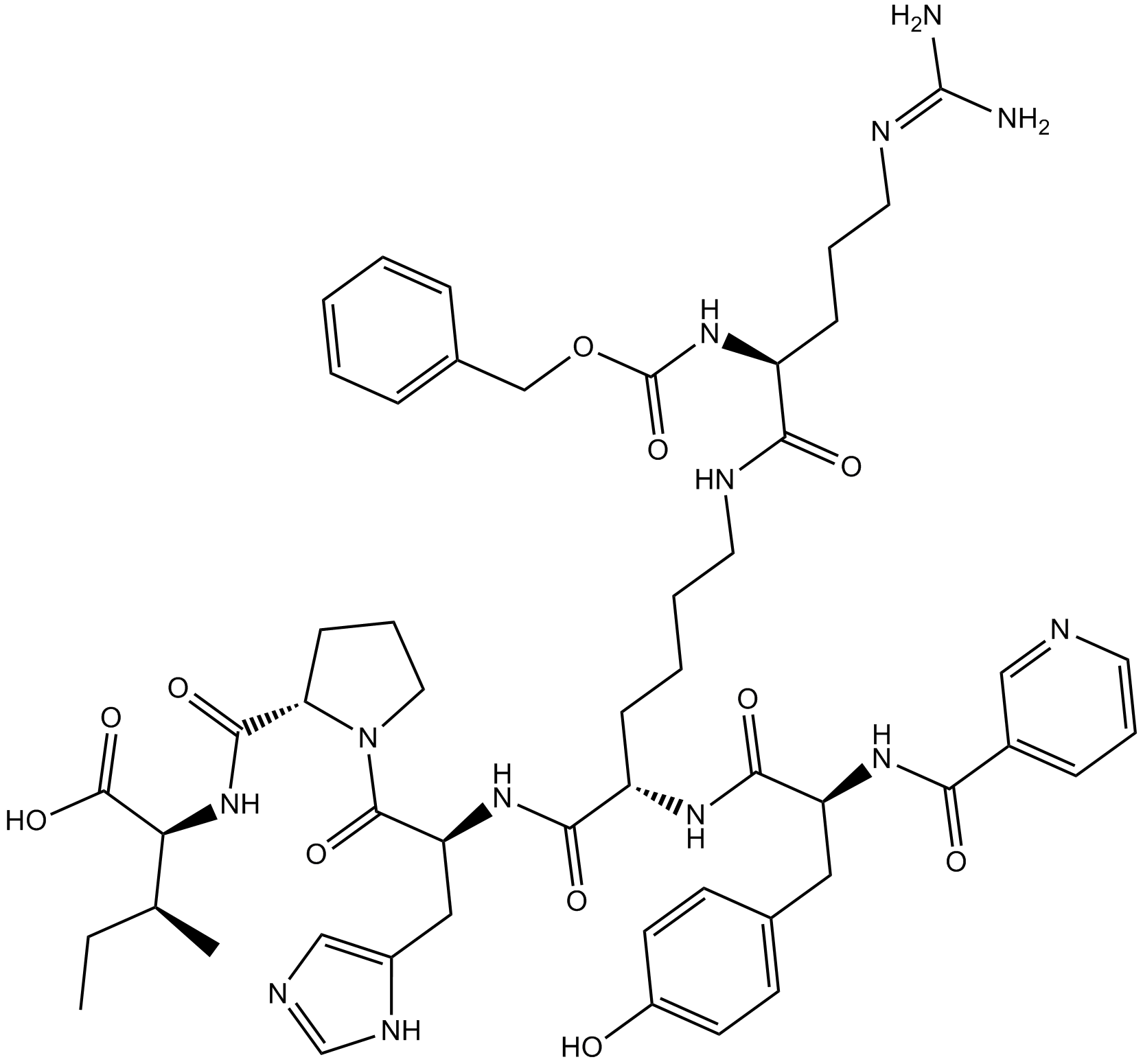 B5316 CGP 42112Summary: angiotensin AT2 receptor ligand
B5316 CGP 42112Summary: angiotensin AT2 receptor ligand -
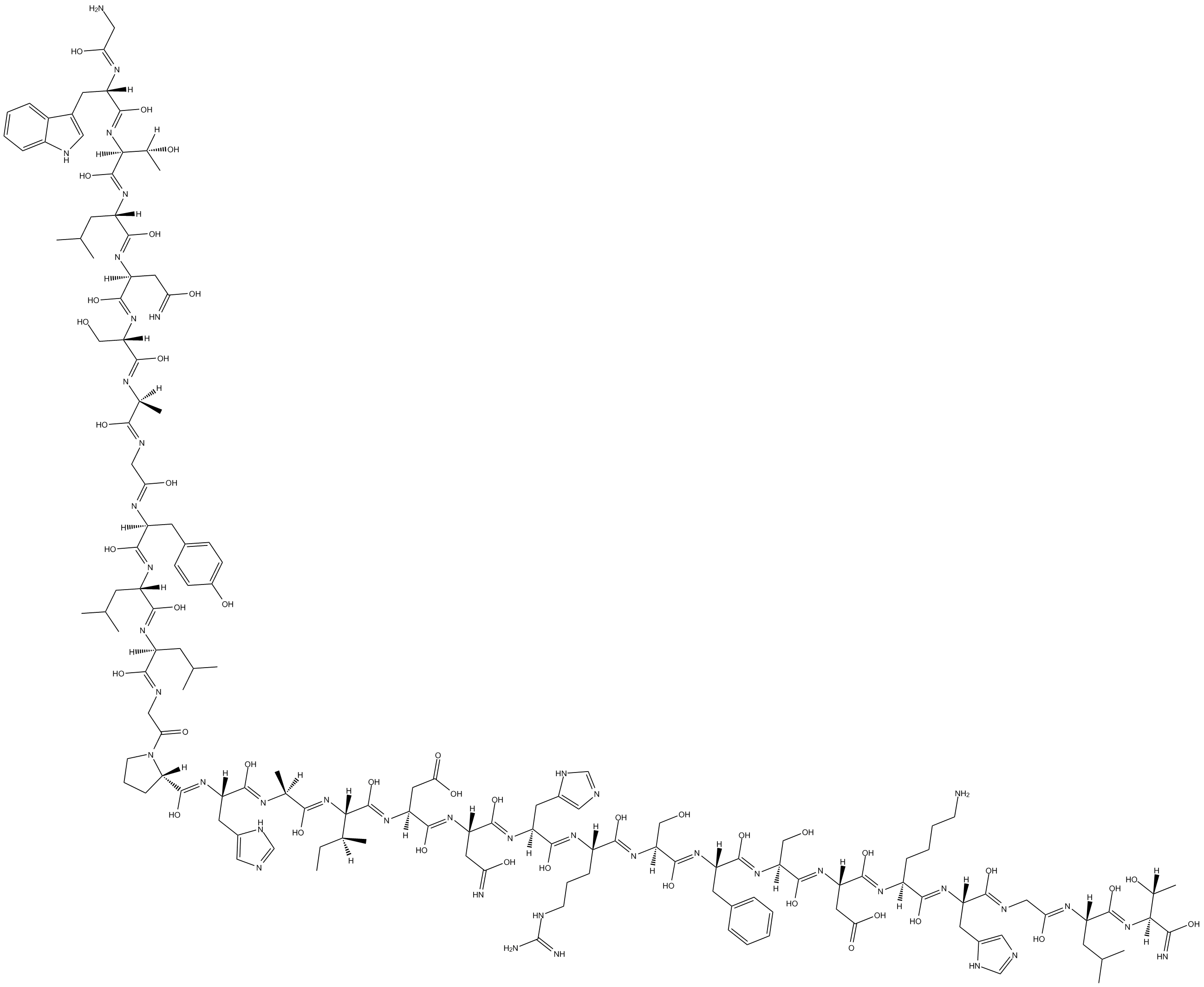 B5325 Galanin (1-29) (rat, mouse)Summary: Non-selective galanin receptor agonist
B5325 Galanin (1-29) (rat, mouse)Summary: Non-selective galanin receptor agonist -
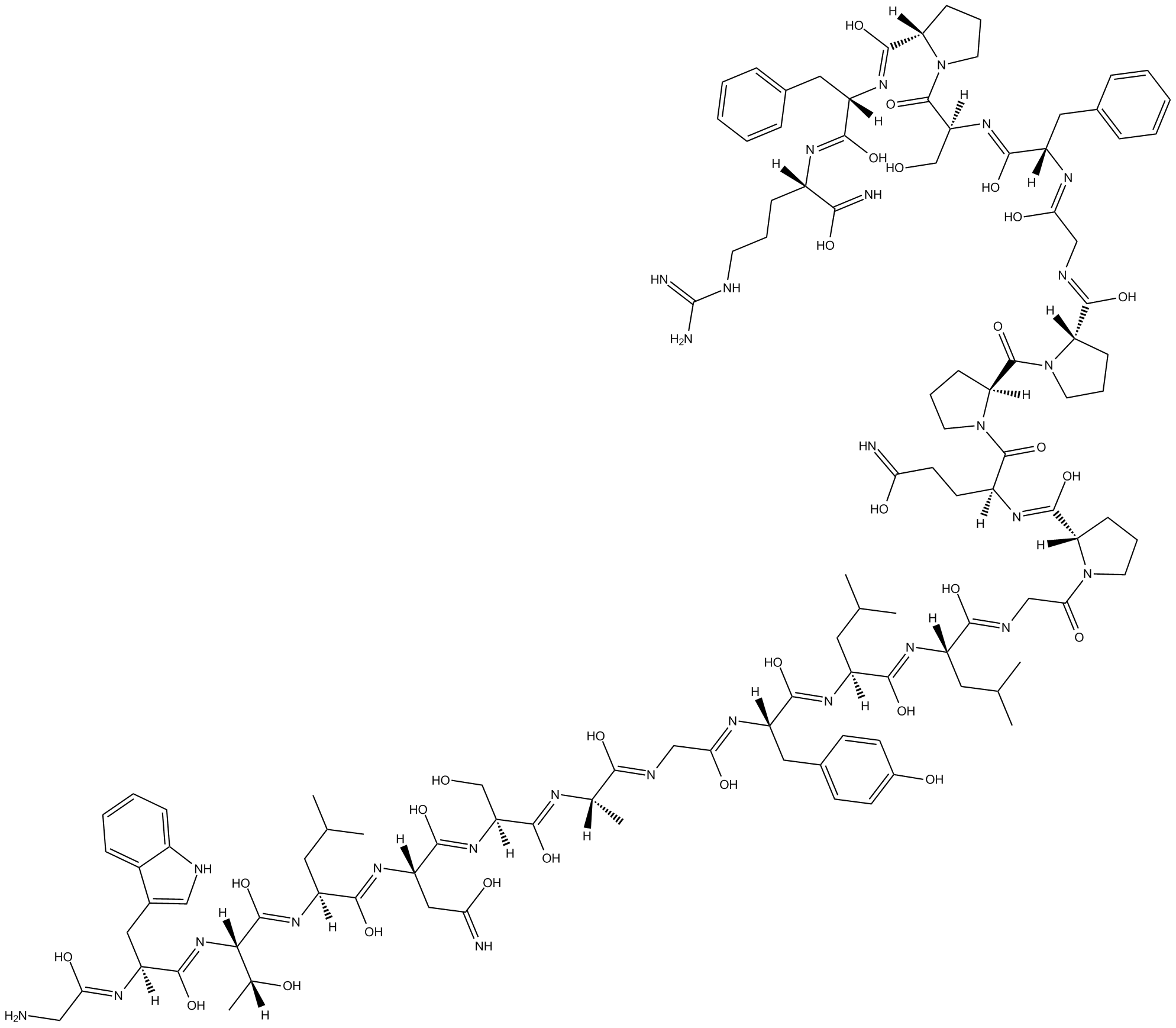 B5326 M617Summary: Selective galanin GAL1 receptor agonist
B5326 M617Summary: Selective galanin GAL1 receptor agonist -
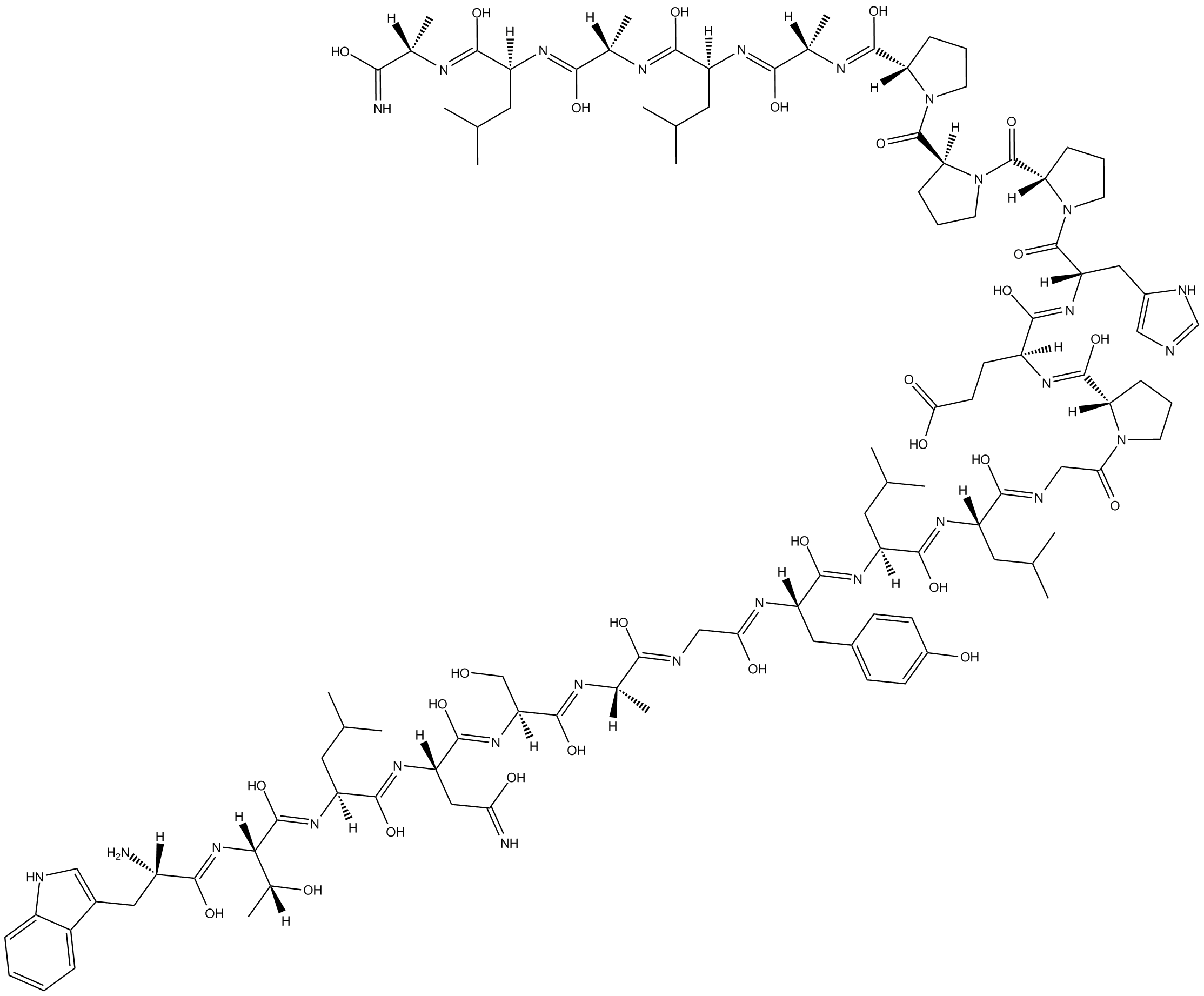 B5327 M871Summary: Selective galanin GAL2 receptor antagonist
B5327 M871Summary: Selective galanin GAL2 receptor antagonist

